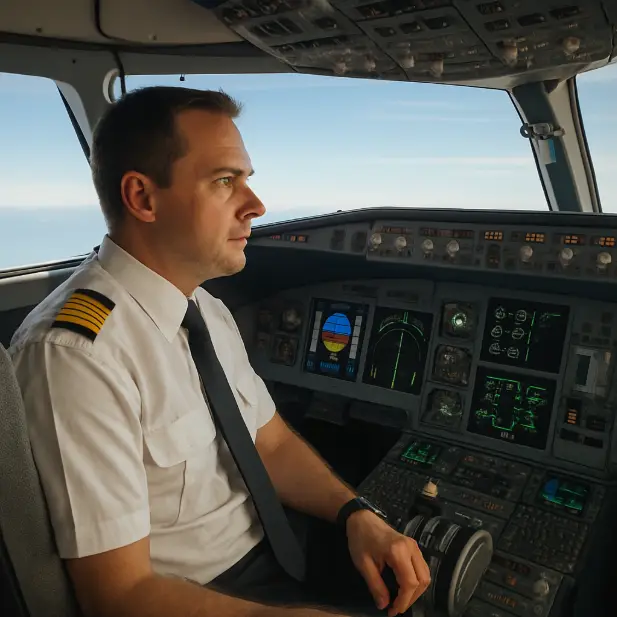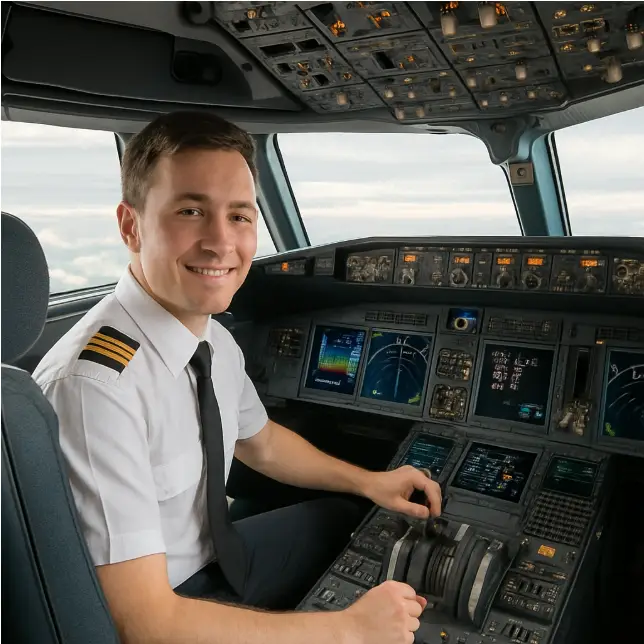Tips for Fast-Tracking Your IFR License
- aviatorpro_6714
Achieving an Instrument Flight Rules (IFR license) rating is a significant milestone in a pilot’s journey. It opens up new horizons, allowing you to fly through clouds and adverse weather conditions that would be prohibitive under Visual Flight Rules (VFR). This capability not only enhances your skills as a pilot but also increases your flexibility and safety while flying. But how can you expedite this process without compromising on quality? Let’s delve into the essentials of fast-tracking your IFR license, covering everything from the required hours to checkride preparations. By following a structured approach, pilots can efficiently achieve their IFR rating, opening doors to more advanced flying opportunities.
Understanding IFR Licensing and Rating Requirements
Before diving into tips for fast-tracking your IFR rating, it’s crucial to understand the basic requirements. The Federal Aviation Administration (FAA) outlines specific criteria for obtaining an instrument rating, which can be completed under Part 61 or Part 141 of the Federal Aviation Regulations (FARs). Knowing these requirements helps in selecting the path that aligns best with your personal and professional commitments.
Part 61 vs. Part 141 Requirements
Part 61 offers a more flexible training schedule, ideal for those who may be juggling other commitments. It requires a minimum of 40 hours of actual or simulated instrument time, with at least 15 hours of instrument flight training from an authorized instructor. This flexibility allows you to tailor your training around your availability, making it a popular choice for many pilots who are balancing work or family obligations.
Part 141 is typically more structured, and suitable for students who can commit to a full-time program. This path requires a minimum of 35 hours of instrument flight training, thanks to its more rigorous syllabus. The structured environment often leads to a more accelerated path due to its comprehensive curriculum and consistent training schedule. Many flight schools offer Part 141 programs that are designed to streamline the learning process, integrating classroom instruction with flight training for a holistic approach.
How Long Does It Take to Get an IFR Rating?
The timeline for earning an IFR rating can vary based on several factors, including your current experience, the type of training program, and personal availability. On average, pilots often take between three to six months to complete the training, though it can be faster with intensive study and practice. The key to a shorter timeline is consistency and dedication to the training process.
For some, the process may be extended due to factors such as weather conditions, aircraft availability, and personal commitments. It’s important to set realistic goals and communicate with your instructor to establish a timeline that works for you. Many pilots find that setting a targeted completion date helps maintain focus and motivation throughout the training process.
Strategies for Fast-Tracking Your IFR Rating
1. Consistent Training Schedule
One of the most effective ways to accelerate your IFR training is by maintaining a consistent schedule. Frequent flying helps reinforce skills and reduce the time spent relearning concepts between lessons. Aim for at least two to three sessions per week to retain proficiency. Consistency not only aids in skill retention but also builds a routine that keeps you engaged and progressing steadily.
In addition to regular flight sessions, integrating consistent study periods into your weekly schedule can vastly improve your understanding and retention of theoretical knowledge. This dual approach ensures that both your practical and theoretical skills are developing concurrently, leading to a more well-rounded training experience.
2. Use Flight Simulators
Flight simulators are invaluable tools for instrument training. They allow you to practice procedures, navigation, and emergency scenarios without incurring the costs of actual flight hours. Many schools offer advanced simulators that replicate real cockpit conditions, providing a safe environment to hone your skills. Simulators also allow for the repetition of complex scenarios, giving you the freedom to practice difficult approaches or emergency procedures as often as needed.
Moreover, simulators provide the advantage of pausing and dissecting different phases of flight, offering an in-depth learning experience that is difficult to achieve in an actual aircraft. This ability to analyze and correct mistakes in real time accelerates learning and enhances your confidence in handling real-world situations.
3. Ground School and Self-Study
Complement your flight training with a robust ground school program. Understanding the theoretical aspects of instrument flying is crucial. Use online resources, books, and apps to reinforce your learning. Many pilots find success with courses that offer interactive lessons and quizzes to test their knowledge. Ground school provides the foundational understanding necessary for interpreting instruments and making informed decisions during flight.
Self-study is equally important in fast-tracking your IFR training. By dedicating time outside of formal instruction to review materials and practice problem-solving, you can deepen your understanding and readiness. Resources such as video tutorials, online forums, and study groups offer diverse perspectives and tips that can enhance your learning experience.
4. Prioritize Cross-Country Flights
Cross-country flights are a requirement for the IFR rating, and they offer excellent opportunities to practice navigation and communication skills. Plan these flights as early as possible in your training to gain experience and build confidence. Early exposure to cross-country flying allows you to apply your skills in a real-world context, reinforcing your training and boosting your confidence.
These flights also provide the chance to experience different airspace and weather conditions, helping you become more adaptable and resourceful. By encountering a variety of scenarios early on, you’ll develop a strong foundation that will serve you well in your checkride and future flying endeavors.
IFR Checkride Preparation
The IFR checkride is the final step in earning your instrument rating. It consists of an oral exam and a practical test, where you’ll demonstrate your proficiency in instrument flying. Proper preparation and practice are essential for passing this critical phase of your training.
Key Areas to Focus On
- Approach Procedures: Be well-versed in executing various approach types, such as ILS, VOR, and RNAV. Each approach type has its unique procedures and challenges, requiring precise execution to ensure safety.
- Navigation: Master the use of navigation aids and be comfortable with intercepting and tracking courses. Proficiency in navigation is a core component of instrument flying, as it enables you to manage and adapt to changing conditions.
- Communication: Practice clear and concise communication with air traffic control, especially under stressful conditions. Effective communication is vital for ensuring safety and coordinating with other aircraft and ground control.
- Emergency Procedures: Know how to handle unexpected situations, such as system failures or adverse weather. Being prepared for emergencies instills confidence and ensures that you can maintain control and composure in high-pressure situations.
Tips for Checkride Success
- Mock Checkrides: Conduct mock checkrides with your instructor to simulate the actual test environment. This helps reduce anxiety and identify areas needing improvement. Simulations provide valuable feedback and allow you to experience the checkride dynamics beforehand.
- Rest and Nutrition: Ensure you’re well-rested and nourished on the day of your checkride. Mental alertness is crucial for success. A clear mind and healthy body contribute significantly to your performance and ability to handle complex tasks.
- Positive Mindset: Approach the checkride with confidence. Trust in your training and abilities. A positive attitude can make a substantial difference, helping you remain calm and focused throughout the process.
The Benefits of an IFR Rating
Earning an IFR rating not only enhances your skills but also significantly expands your flying opportunities. You can plan trips without the constant concern of weather limitations, and it positions you as a more versatile and valuable pilot. An IFR rating is highly regarded in the aviation community, often being a prerequisite for advanced certifications and career opportunities.
Whether you’re flying for leisure or pursuing a career in aviation, an instrument rating is a worthy investment in your future. It not only boosts your confidence and competence as a pilot but also opens doors to new experiences and pathways in your aviation journey.
Conclusion
Fast-tracking your IFR license is an achievable goal with dedication, proper planning, and the right resources. By understanding the requirements, maintaining a consistent training schedule, utilizing simulators, and preparing thoroughly for the checkride, you’ll be well on your way to joining the ranks of instrument-rated pilots. Embrace the journey, and soon you’ll enjoy the freedom of flying through the clouds with confidence. With persistence and the right mindset, the skies are truly the limit.



